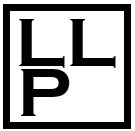Guest Post: Public Libraries - Access Beyond the Shelves, by Sandy Ho
Central to the egalitarian mission of public libraries is the belief that all people should have equitable access to information. I didn’t know this when I was a child who preferred to clamber out of her wheelchair to crawl between the bookshelves in the Children’s Room at the Boston Public Library, but I felt it firsthand. Most people don’t necessarily think of public libraries as places to experience autonomy, choice, accessibility, and inclusion, but these ideas and experiences are inextricably linked in my childhood memories of visits to the library.
There was The Newton Free Library, where my parents took me and my older brother during the hot summers for free air-condition because our Section 8 housing had none. It was there that I watched my parents receive free tax assistance growing-up, and where I would later go as an AmeriCorps member for the same services myself. I think of The Boston Public Library where my grandparents worked and where my grandpa would haul home stacks of Chinese videotapes, cassettes, and later on, DVDs. I remember spending a few years working with an elderly woman every week at the Cambridge Public Library, typing up short stories she had written based on her life, that eventually culminated into a short chapbook. The CPL was the perfect meeting spot for us - a short walk from her apartment and an accessible study-space for us to work together. A few years later, when I finally went on my first self-paid vacation, I made sure that the public library was always on my itinerary - they are where the local history and local people are found.
These were some of the thoughts and memories on my mind when I met with Greg and Adam at the Weston Public Library. I started our conversation by asking “When you think of accessibility, what comes to mind?”
Immediately, the Americans with Disabilities Act was brought up. Followed by “but most libraries are in historical buildings.” While architectural barriers are among the literal concrete examples of (in)accessibility, I explained that for me, I view accessibility in public libraries beyond standard doorways.
My experiences as a disabled person are not separate from my experiences as someone who grew up in Section 8 housing, speaks two languages at home, is passionate about social justice, loves writing, enjoys traveling, and also prefers physical books over ebooks. Libraries accommodate these various facets of myself under gothic architecture, vaulted domes, roman columns, and marble stone. Their brick and mortar structures welcome all of my identities and the ways that I move - without presuming I am only one kind of person or another. Outside of my home, I am still looking for another place that provides the unwavering welcome of the public library.
Are there libraries that will need to be renovated? Yes, always. Is it possible to appreciate a historical building and an institution that is accessible to all patrons? Yes, I believe this can be done. Are there ways that our civic institutions can expand access beyond the measurements that are required by the ADA? Yes. Because accessibility should be about making all people feel welcomed. The inches or angles of inclines can serve as the starting point for the conversation, but they shouldn’t be the only source we use to determine access.
Creating access is as much about equity to information as it is about removing barriers to information. Here are a few examples of what libraries could do that come to mind:
Academic resources: Too often, students with disabilities and/or those who experience barriers to learning may experience stigma from their peers or teachers during the school day. Libraries can provide any student with technology, study-aids, or adaptive tech resources that can help.
Civic Engagement: During voter registration periods, do librarians know about the RevUp campaign and Disability Voter Registration week? Nationwide one in four people identify as living with a disability, that’s nearly 61 million Americans! As civic centers, libraries can facilitate engagement and the democratic process by posting materials on voting rights and resources for everyone.
Cultural history: Often times libraries will create shelves or sections dedicated to a cultural history whether it’s during Pride for LGBTQ history, Black History Month, Chinese New Year, the suffragist movement, and other historical and cultural celebrations. Not only is the history of disability rights woefully underrepresented (if at all!), but for many disabled people, our history is a source of identity and pride. Libraries can help by sharing their books by disabled authors and other resources that celebrate disability identity, culture, and history.
These are only some suggestions that I offer, but librarians and library staff are some of the most innovative and resourceful people I’ve ever met. We can, and should, expect that broadening access will result in programming and services that can bring about tough conversations in our classrooms, communities, and neighborhoods. But tough doesn’t need to be unwelcoming, let’s embrace this challenge.
Sandy is a disability community-organizer, activist, and disability policy researcher. Most recently, Sandy is learning the ways of being a research associate at the Lurie Institute for Disability Policy at Brandeis University. She is the founder of the Disability & Intersectionality Summit, a biennial national conference organized by disabled activists and centers marginalized disabled people. In 2015, she was recognized as a White House Champion of Change for her work in mentoring for transitional-age disabled women. Sandy is one third of the team behind Access Is Love, a campaign that is co-partnered by Alice Wong and Mia Mingus. Her areas of work include disability justice, racial justice, intersectionality, and disability studies. She is a disabled queer Asian American woman whose writing has been published by Bitch Media online.

